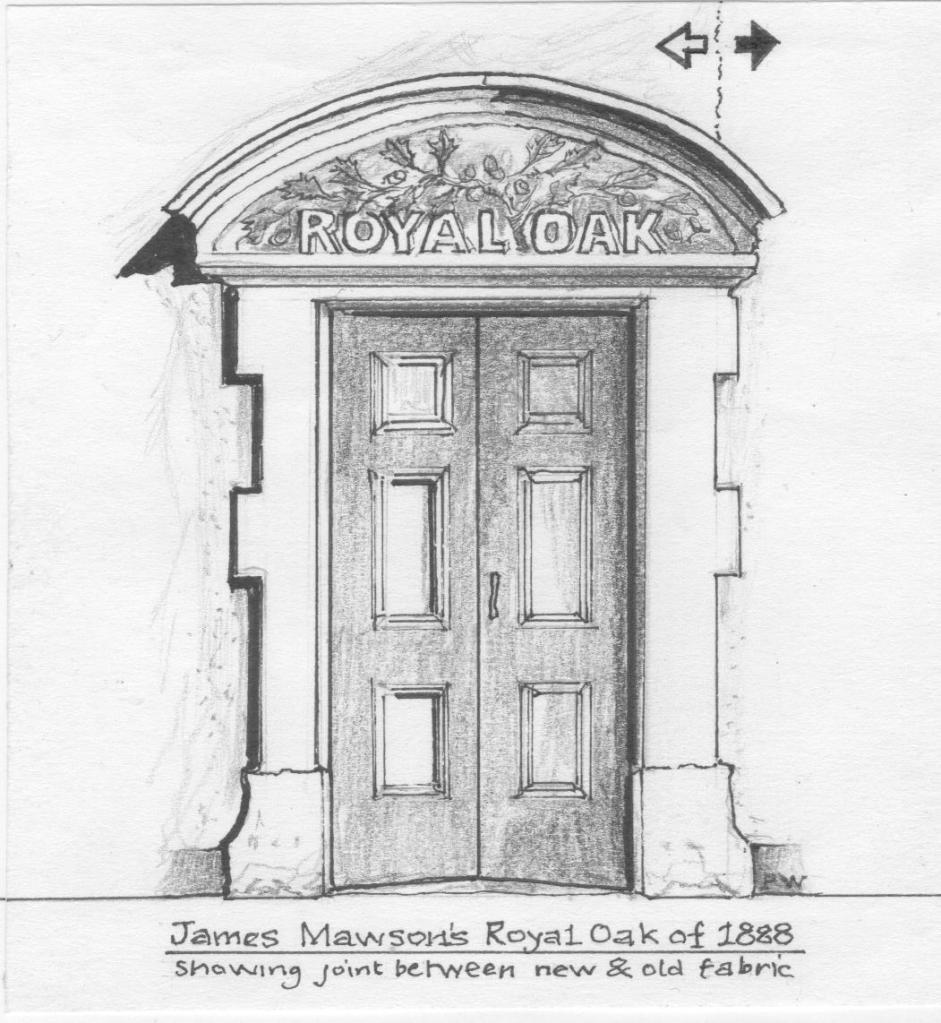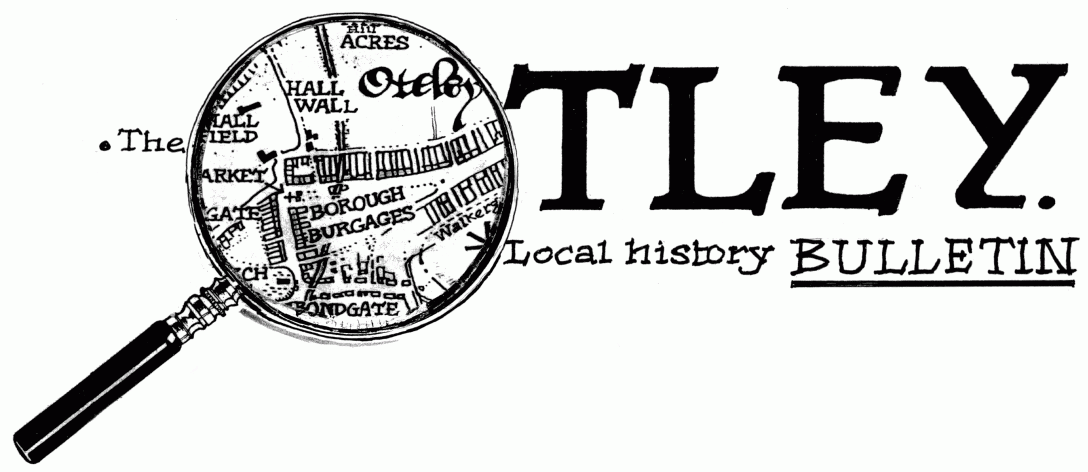by Paul Wood
The history of the former ‘Royal Oak’ pub on Clapgate, which closed in 1970, has planted the usual claims and counterclaims as to its actual germination. The painted legend on the building proclaims Charles II hiding up the oak in 1651 after the battle of Worcester, which itself promotes the regal mythology that we have here ‘one of the oldest Inns in Otley’.
Of the many Royal Oaks which repeat this anecdote, ours does not have the ancestry to qualify as a tourist attraction. Nevertheless, the detailed local family tree which did support our sign needs an explanation. This was yet another example of the ‘convoluted mobility of landlord and landmarks’ noted around the ‘Fleece’ at the west end of the town (Wood, P. 2013, pp. 132-3). As if to confuse the Oak lineage even further, we document that our original was not even rooted on the present site in the first place.
As has been shown in our Bridge Street, ‘Three Horse Shoes‘ bulletin, William Gill, yeoman, surrendered 2 dwellings and a stable ‘now erecting on the site of Whitwham barn’ to John Gott, maltster on the 5th September 1754. By 1760, this ‘Clapgate House’ was occupied by Thomas Brotherton, innholder and ale house keeper. The naming of Bridge Street is self evident, but that of Clapgate needs explanation. This was dialect for a self closing gate which touches on two posts, allowing people, but not animals to pass. This may refer to a lost secure entry to town in the time of wandering livestock. Otley Clapgate can be paralleled at Kearby in Kirkby Overblow where it gave its name to their own ‘Clap Gate’ Inn. As the Edwardian picture postcard claimed;
“This gate hangs well and hinders none
Refresh and pay and then pass on”
An indenture of 1846, regarding the Bridge Street property of John Gott under his will of 1775, gives us a starting point. Here was an inn known by the name of the ‘Royal Oak’ and formerly called by the sign of the ‘Clapgate’, previously in the occupation of Joseph Curtis, then Margaret Ingle, widow. Also stables, shed, brewhouse and yard belonging (Court Rolls & P/dc/19).

Joseph and William Curtis were succeeded in the 1820s by innkeepers, carriers and maltsters, Thomas and Margaret Ingle (O/BS/ab/1, 1820-49). It was probably the widowed Margaret and daughter Mary who carried their sign across the street to the second, and more familiar Royal Oak site. The three storey house, built out of Burnett barn and backing on to the pinfold sheep pens, has its front door directly opposite from whence the Ingles came. The old Clapgate house was then crudely defaced with stable and hay loft doors for the new Oak.
Ingles Bridge Street ale was joined around the corner on the south side of Clapgate by Saddler William Brown’s beershop during the 1850s. Probably taking advantage of the Beer Act to supplement his income, the craftsman had returned to saddlery and harness making by 1857 (Census & Trade Directories). The last signs of the Ingle family, before William Fielding took over the tenancy in 1876, was a year earlier when Miss Mary Ingle, victualler was listed at the ‘Royal’ Hotel.
The next notable name on the old Clapgate house and Royal Oak deeds was James Mawson, Corn Dealer. In 1881, traffic deadlock at the top of constricted Bridge Street brought forward a scheme to add an arc through the sheep pens – in effect making the Royal Oak into a traffic island (W&AO July 1881). Similiarly in 1882, the Local Board were determined to set back Mawson’s ‘obnoxious stables’ described by a local reporter as ‘an abominable piece of indecency’. Traffic continued to stall and the removal of the offending Clapgate house would take another 44 years.
Mawson’s alterations to the ‘Royal Oak’ were approved on the 19th June 1884. This included the removal of the third storey from the older structure and the building of a new extension over the sheep pens to the rear. A disctinctive feature was the decorated oak pediment to the Clapgate door, for which the building is primarily listed (O/br/118).

The next failed attempt to clear Clapgate house from Bridge Street was in 1909, when Francis H. Mawson applied to build 2 lock up shops on the site. The plan was deferred so that the Council could fix a new building line under the Otley Improvement Act of 1905 (O/br/892). Demolition for 2 shops did not actually occur until 1926 (O/br/1455), by which time the ‘Oak’ opposite was under Bentley’s Yorkshire Breweries. The pipeline between brewer and pub was further attached when ‘BYB’ opened their new shop at 1c Bridge Street in 1935 as a modern manifestation of the maltkiln (O/br/1986).
A hospitality of well over 20 Royal Oak landlords had called time into the twentienth century since the Ingles era, but in 1970 the pub finally closed its door for conversion to a solicitors office. Almost regardless of Charles II and the 1651 anecdote, the ordinary chronicle spanned some 210 years from Clapgate house to two Royal Oaks. Popular pub legends will of course persist – but this local footprint needs clarity – however drunk or disorderly.
Sources:
Wood, P. (2013) ‘Guide to the Townscape’.
Walker, H. (1973) ‘Little Town of Otley’ pp. 78
W&AO; Wharfedale Observer; Fred Morrell articles.
Otley Museum; building records, trade directories, account books, photos.
Court Rolls; PW/CD transcripts.
